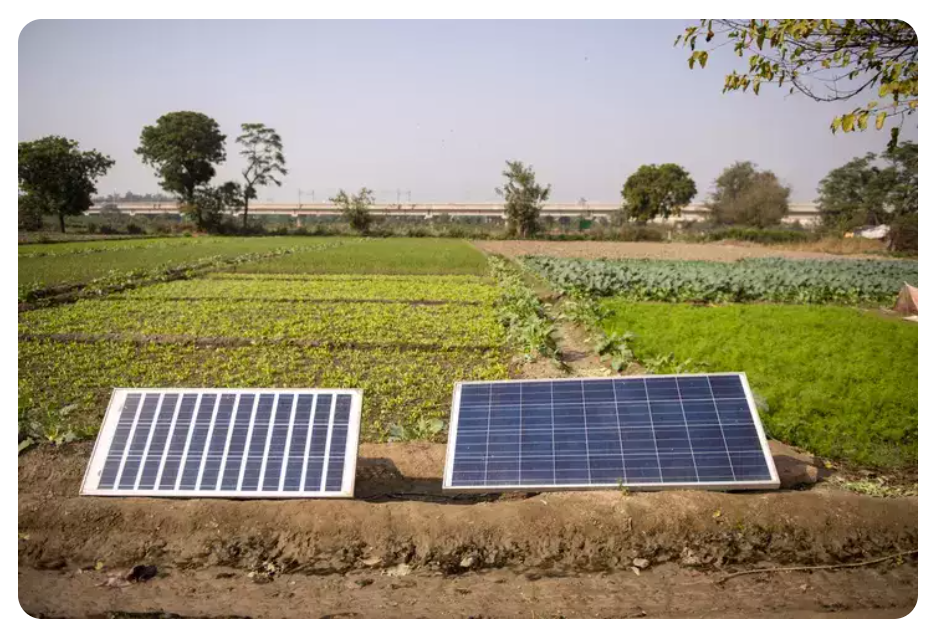FDRE is essential to steer the energy transition in the emerging era of energy resilience and sustainability. It is also vital for enhancing grid stability and unleashing the complete
potential of renewable sources.

By 2030, India aims to source 50% of electric power from non-fossil fuels and reduce carbon emissions by 45% from 2005 levels. To achieve this target, the 2023 National Electricity Plan by the Central Electricity Authority (CEA) has estimated the need for 486 GW of variable renewables (solar and wind). However, the high penetration of variable and intermittent renewable energy (RE) poses challenges such as grid balancing and underutilisation of the transmission system. These challenges can be solved through firm and dispatchable RE (FDRE) power, which is obtained by transforming the variable RE into FDRE through integration with energy storage systems (ESSs). Thus, as the name suggests, FDRE provides assured round-the-clock (RTC) power from green sources to consumers.
As flexibility providers, ESSS can store surplus energy produced during peak times and release it during periods of high demand or when RE resources are less productive (the sun is not shining or the wind is not blowing). Thus, ESSS empower RE to meet energy demands consistently, enhancing the efficiency and resilience of the grid. This improved reliability—without compromising sustainability—could be revolutionary for both industries and households.
Ministry of Power (MOP) guidelines on FDRE
To promote FDRE, MoP issued guidelines for competitive bidding of firm and dispatchable power from grid-connected RE projects with ESSS in June 2023. As per the guidelines, FDRE tenders will facilitate the provision of assured peak power and RTC power at any hour of the day as per demand specified by the distribution company (DISCOM). Further, RE generators integrated with ESSs need to supply power with a higher capacity utilisation factor (CUF), which is a measure of the actual output of an RE plant against its ma output. In case of default, the RE generator will have to compensate ule DISCOM at 1.5 times the tariff for the number of units not supplied.
ESS tenders: Before and after the guidelines
Prior to the guidelines, ESS tenders were mainly issued for addressing peaking power requirements and providing RTC power. However, in these tenders, the ESS component was not mandatory, the yearly CUF of the RE varied across tenders, and there was a lack of clarity regarding the power requirement and its schedule.
After the issuance of the MoP guidelines, stakeholders have gained more clarity on these aspects, leading to a noticeable increase in the number of tenders. As of today, Solar Energy Corporation of India (SECI) Ltd, SJVN Ltd, NHPC Ltd, and NTPC Ltd have issued FDRE tenders with a cumulative capacity of 11 GW. Among these tenders, only the SJVN tender has been concluded at a tariff of INR 4.38/kWh, which is
considerably lower than that of many thermal power plants. Thus, these guidelines will now make FDRE a true competitor to conventional thermal sources.
Key insights and the way forward
Analysis of the MoP guidelines and subsequent FDRE tenders reveals two key insights. First, the emphasis on a higher CUF or a 90% demand fulfilment ratio for the month (as evident from the five FDRE tenders released by SECI Ltd) compels RE developers to structure their bids strategically. Thus, the bid design is oriented towards having the installed capacity of RE exceed the capacity committed by the generator. This strategic approach is driven by the economic advantage of RE, with both solar and wind being more cost-effective than storage (given the higher cost associated with ESSs). Consequently, this bidding strategy is anticipated to increase the overall installed capacity of RE within the grid.
Second, the MoP guidelines and FDRE tenders shed light on the scheduled commencement of the projects. According to the guidelines, projects below 1000 MW are expected to commence within 24 months, while projects above 1000 MW have a 30-month timeline. This indicates that the storage component in the bid is likely to consist of battery ESS (BESS) projects rather than pumped hydro storage (PHS) projects. Due to their longer gestation periods, PHS-unless close to completion—may not participate in the tendering process. Thus, more FDRE tenders in the future may lead to an increase in BESS projects.
To ensure and promote storage-technology-agnostic tenders, the timeline for the scheduled commencement of projects should be revisited. Further, domestic battery manufacturing should be promoted for the widespread availability of batteries in the market and for cost reduction.
Going forward, FDRE is essential to steer the energy transition in the emerging era of energy resilience and sustainability. It is also vital for enhancing grid stability and unlocking the complete potential of
renewable sources, which will guarantee cleaner and more dependable energy for future generations.
Article Credit: energy.economictimes.indiatimes